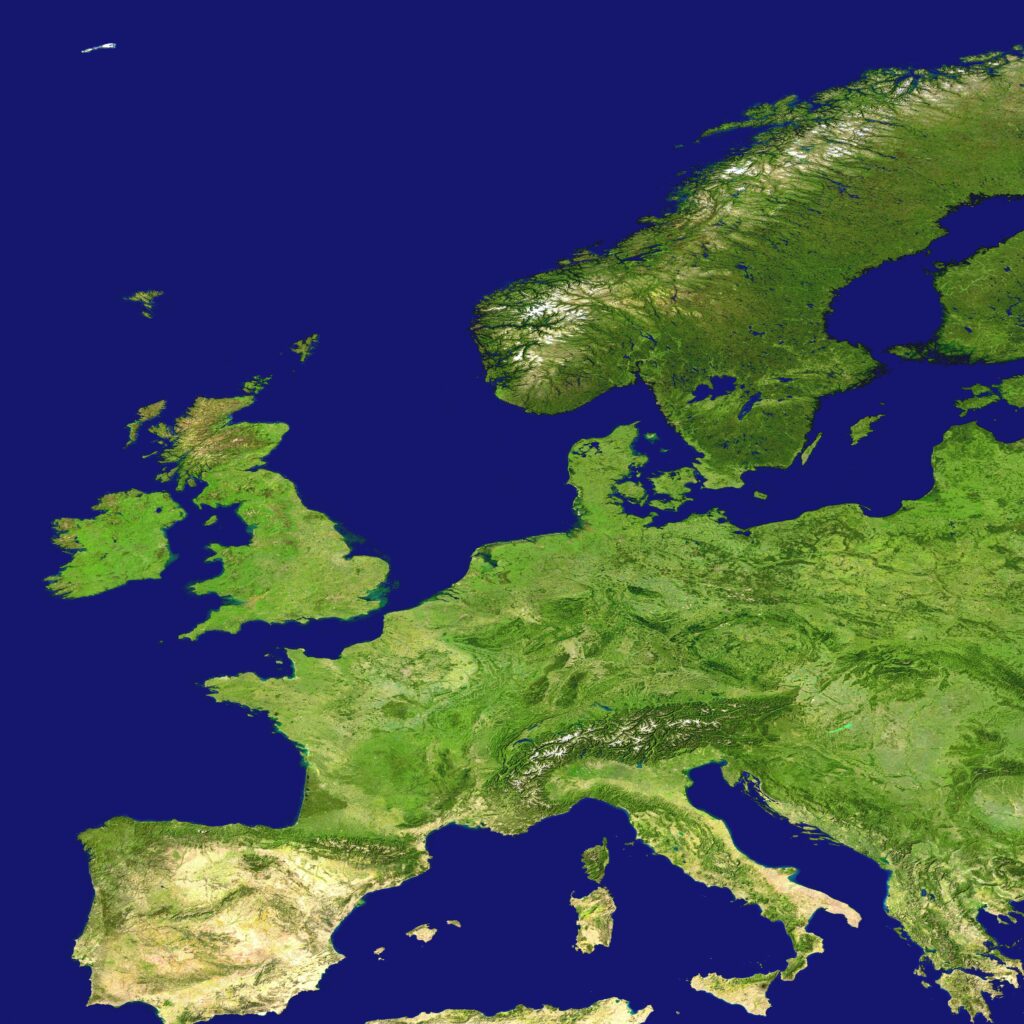Europe stands at a critical junction in the face of accelerating climate change. As the fastest-warming continent, it grapples with intensifying extreme weather, cascading environmental risks, and mounting economic losses. The convergence of climate impacts with security, economic stability, and social cohesion calls for urgent action: will Europe successfully build climate resilience, or will it succumb to environmental insecurity? This blog explores the scope of the threats, the efficacy of current strategies, and the imperative of systemic transformation.
Climate Impacts and Growing Environmental Vulnerability
Recent assessments reveal Europe’s escalating vulnerability. Earth’s warming trends have hit Europe hardest, resulting in heightened pressure on its food and water systems, infrastructure, and public health. The European Environment Agency underscores that climate risks are undermining the continent’s energy and food security, damaging ecosystems, and destabilizing key sectors, from agriculture to health services.
The financial toll is staggering: between 2021 and 2023, weather and climate extremes generated €162 billion in economic losses. Looking ahead, Europe’s annual adaptation finance gap is projected to reach €28 billion by 2030. Alarming events like the 2024 floods in Spain, which claimed over 230 lives and caused €10 billion in damages, expose both the dramatic human costs and the institutional fragility in adapting to rising climate threats.
Europe’s Framework for Climate Adaptation: Ambitions and Gaps
Responding to these threats, the European Union has developed a web of strategies. The 2021 EU Adaptation Strategy pushes for smarter, faster, and more systemic resilience-building. It underscores the need to integrate nature-based solutions, promote climate-proof infrastructure, and mainstream adaptation across policy sectors. Complementing these efforts, the “Fit for 55” package drives aggressive climate mitigation and clean energy adoption. The Just Transition Mechanism channels €55 billion to support communities most affected by the green transition, aiming to ensure fairness alongside environmental responsibility.
Innovative tools like “Destination Earth” (DestinE), a digital twin of the planet, are being designed to simulate environmental phenomena and inform adaptation decisions in real time. Similarly, the European Flood Awareness System (EFAS) provides early warning systems for transboundary floods, strengthening civil protection and cross-border coordination. These tools, combined with nature-based strategies such as ecosystem-based adaptation, restoring wetlands, mangroves, and forests, demonstrate a shift toward holistic resilience models.
Yet challenges remain. Institutional silos, short-term budgeting, and underfunded local initiatives have hindered progress. Reports call on the EU to elevate climate adaptation across all layers of governance, integrate resilience into every policy area, and ensure local communities have access to agile funding.
Climate Security, Geopolitics, and Transboundary Risks
Climate disruption is not a purely domestic challenge, it variables into geopolitics. The EU External Action Service recognizes climate change as a threat multiplier, particularly in fragile regions. The security implications are stark: pressure on natural resources can fuel conflict and mass migration, potentially destabilizing European borders.
In response, the EU has begun integrating climate sensitivity into its security operations, diplomatic outreach, and development assistance. Environmental peacebuilding initiatives, such as work in the Sahel, underscore the links between ecosystem restoration, conflict reduction, and sustainable development. Nonetheless, critics argue that climate action remains underprioritized in European security and defense planning, with strategies still fragmented across development aid, migration control, and conflict prevention.
Toward System-wide Resilience: A Unified European Approach
To rise above environmental insecurity, Europe must broaden its climate strategy. First, adaptation must become a funding priority at the EU level—with resources equitably flowing to both frontline communities and regions vulnerable to climate shocks. Countries and municipalities must receive direct access to adaptation funding and tools.
Second, cross-border collaboration must be elevated; climate impacts do not respect national boundaries. Stable mechanisms, like EU-wide early warning systems, risk management platforms, and adaptation knowledge-sharing networks, are essential. Civil society and local actors should inform decision-making, especially in climate-sensitive regions.
Third, climate security requires strategic alignment, melding climate adaptation, peacebuilding, and security planning. The EU should mainstream ecological diplomacy into its external actions, support climate-sensitive conflict resolution, and align its military and humanitarian planning with changing environmental realities.
Finally, Europe must embrace transformative resilience. This involves urban design that prioritizes sustainability, just transitions for fossil-dependent industries, and a deeply embedded culture of environmental stewardship. Only systemic, inclusive approaches can ensure long-term stability in a changing climate.
Charting Europe’s Climate Future
Europe’s fate in the battle between resilience and collapse depends on its ability to confront climate threats with urgency, equity, and foresight. Strengthening institutional frameworks, harnessing innovation, and bridging sectors, from security to environmental justice, will be critical.
If Europe fails to scale its adaptation efforts, the price will be steep: accelerating insecurity, economic disruption, and social fragmentation. But if it succeeds, the continent can emerge as a global model for climate-resilient governance.
Ultimately, the fight for climate stability is not just about infrastructure or policy. It is about safeguarding the well-being of current and future generations, and ensuring that Europe remains a place of opportunity rather than crisis.
References
Carnegie Endowment. “The EU’s Triple-Nexus Challenge: Climate, Conflict, Democracy.” November 2024.
Center for Future Generations. “Why the EU needs a comprehensive climate security strategy.” September 2024.
Copernicus. European Flood Awareness System (EFAS).
E3G. “Wakeup call for the EU: Deal with climate insecurity urgently.” March 2024.
ECDPM. “European support for adaptation in times of shifting politics and tight budgets.” January 2025.
ECDPM. “Environmental peacebuilding as a climate-security priority.” July 2025.
European Comission. “CAScading Climate risks: towards ADaptive and resilient European Societies.“
European Commission Climate Action. EU Adaptation Strategy.
European Environment Agency. “Climate change impacts, risks and adaptation.” June 2025.

